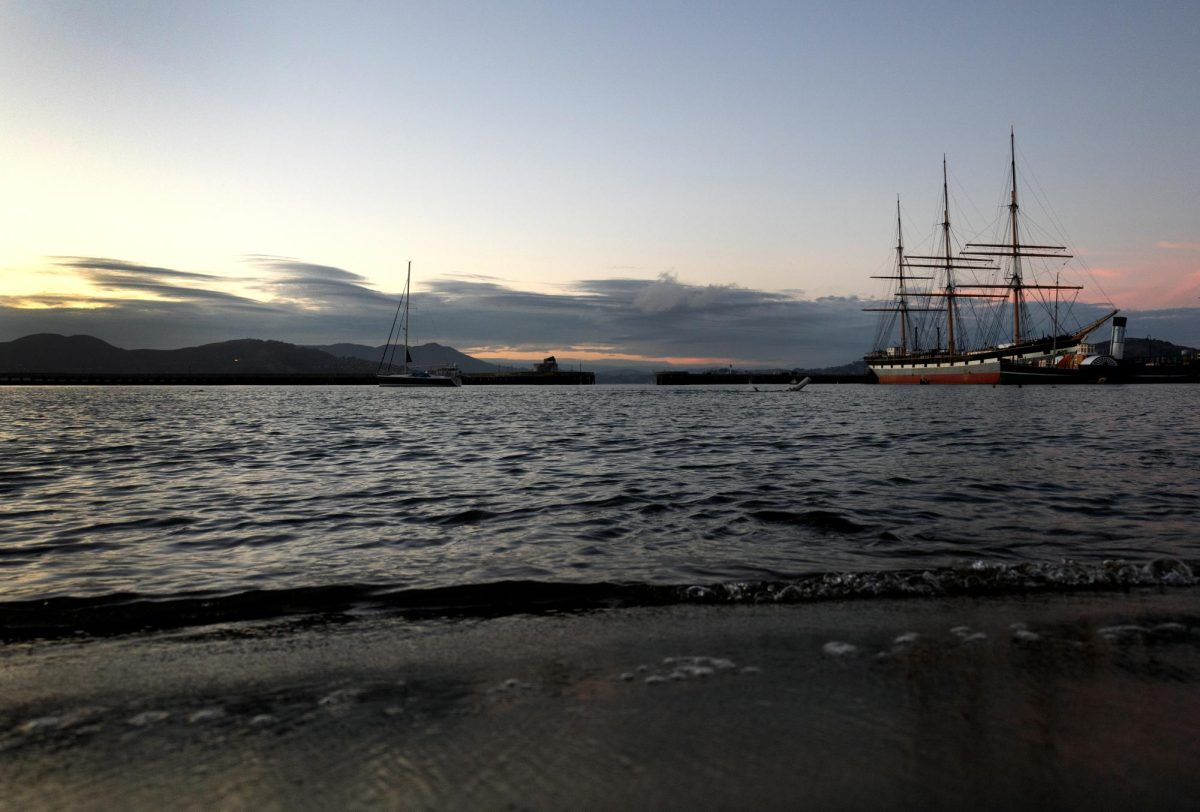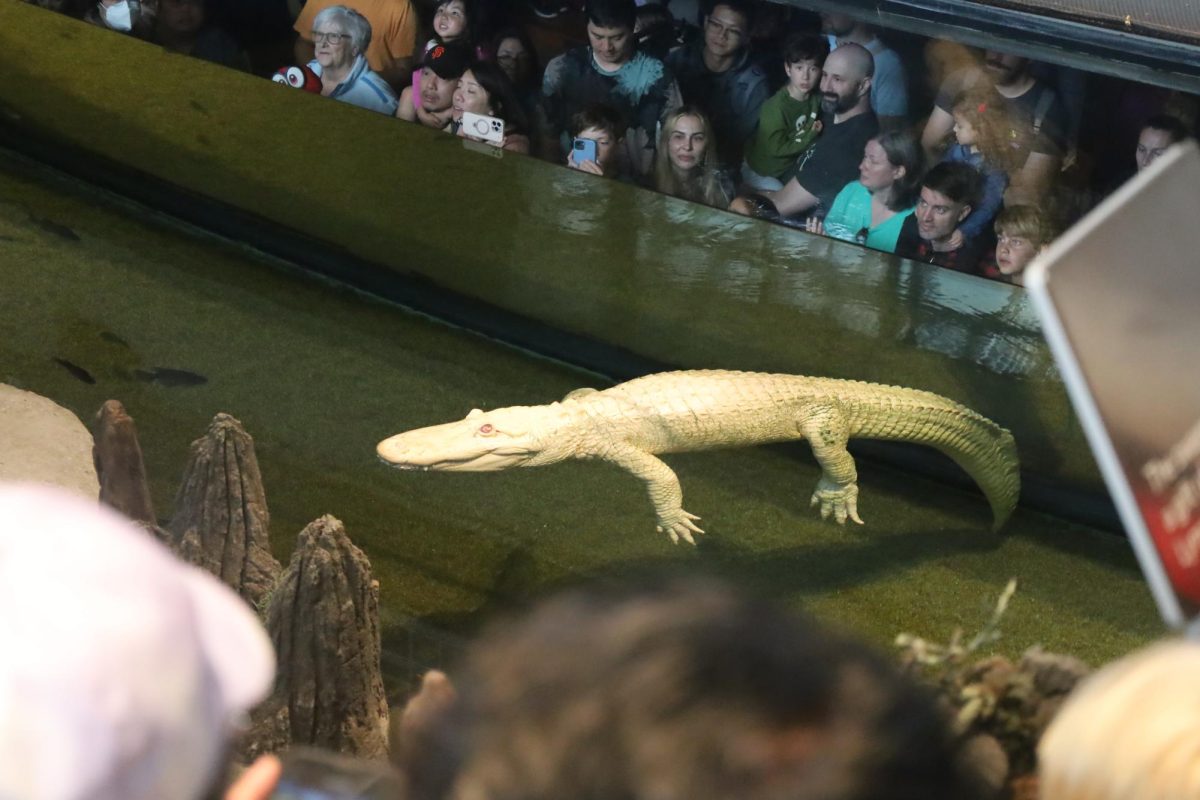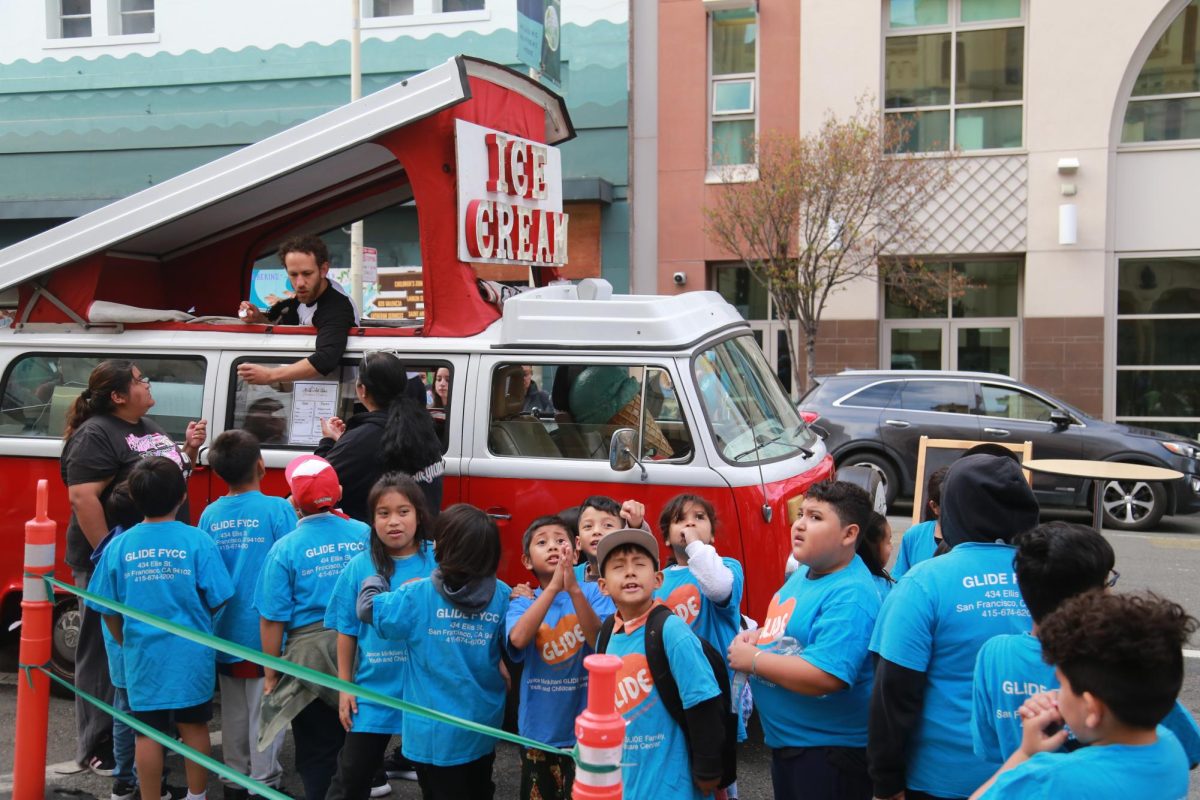At 4 a.m. before the veil of dawn lifts itself over high Northern Californian mountaintops and breaches the branches of redwood harems, longtime fisherman and boat captain Zack Medinas starts his day.
Portside of his cream-colored ship is its name, Gatecrasher, complete with bright orange floatation devices, a spacious pilot’s cabin and a fish cleaning station toward the stern of the vessel. After making sure things are ship-shape, Medinas and his crew rev the engine and break the calm morning water.
“When I hit the water, this is where the connection to nature starts,” Medinas said. “My mind is already starting to tabulate everything.”
Over the years, Medinas has become so synchronized with the natural world that he can determine what spots to fish at depending only on what’s going on around him, such as how murre birds, a coastal brown bird, are usually accompanied by bait fish, which typically are smaller fish eaten by predators, like salmon.
Rather than being something separate from the ecosystem around him, Medinas considers himself to be part of it.
“When I’m salmon fishing I’m behind the wheel for four to twelve hours every day,” Medinas said. “No choice but to study all of my surroundings. All the birds? I know all their behaviors. ”
The last time Medinas and other Californian anglers were permitted to fish for salmon was two years ago. The California Department of Fish and Wildlife canceled the seasons in accordance with advice given by the Pacific Fishery Management Council, who monitor fish populations.
According to Peter Tira, who is a public information officer for the CDFW, it was fishers like Medinas who raised concerns about the health of the salmon populations that got the season canceled first in 2023.
“Recreational anglers [and] commercial anglers are some of the biggest advocates these species have,” Tira said. “They’re on the water, they’re the first to identify trends, or disease, or things like that.”
In response to the canceled seasons, Medinas and other fishers have had to adapt to stay afloat.
“I would say it [salmon] probably makes up two-thirds of my annual income,” Medinas said. “Being told that you are going to work this year and make about a third or 50% of your annual income is devastating.”
Due to the restrictions and canceled seasons, anglers have had to change what species they fish for. Halibut, a flat fish with both eyes on one side of its head, is a new favorite amongst fishers.
“If I’m going to remain fishing, well, I’ll have to pivot to another species, right?” Medinas said.
However, Medinas and fellow fisherman Don Franklin say this puts additional pressure on other fish. They worry that this could cause population crashes in other species like the halibut.
“They’re fishing anything they can fish for,” Franklin said. “The issue is, there’s only so much pressure any fishery can take.”
The fisheries are locations where commercial and recreational fishers are permitted to fish. But like the fish, there’s only so much pressure the fishers can take. Meaning for some, business is all dried up.
“There’s a lot of boats up for sale,” Franklin said. “It’s not just California, it’s Washington, it’s Oregon. Fishing has never been an easy thing.”
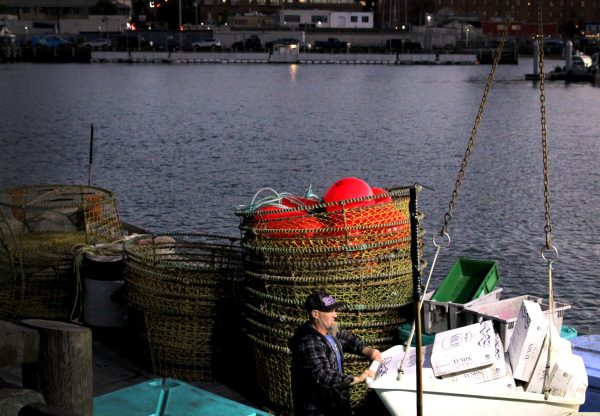
Medinas echoed Franklin’s fears.
“It’s frightening for me,” Medinas said. “My children are already raised, and so I don’t have to worry about letting them down. But again, at 55 years old, I’m kind of in the twilight of my working years.”
While many of the fishers in the Bay come from lineages of fisherfolk , Medinas started fishing on his own to provide for his.
“My mom would make a pot of rice and she’d make a big salad,” Medinas said. “I’d sit there with my four other siblings and clean my own fish. She’d let everyone know while we were at the table Zachary got this dinner for us. I think it was really good for myself to see being that young, and it instilled in me the importance of providing.”
To provide these days, however, many fishers like Medinas have been forced to take up other forms of work to make ends meet.
“I tried really hard to diversify my income,” Medinas said. “I’ve done work for the San Francisco Estuary Institute, the Monterey Bay Aquarium and recently I did a four-month long population study for white sturgeon for the California Department of Fish and Game.”
Medinas and other fishers worry about the long-term survival of the salmon populations; they want to ensure the fish has a future in California. However, ecologists say current environmental conditions make things choppy.
Ecologist Dr. Theodore Grantham, who studies water and the environment at his UC Berkeley lab, says the San Francisco Bay ecosystem is not in great shape.
“We’ve seen the decline of many native fish species that live here,” Grantham said. “And that’s a consequence of a whole host of factors, including the reduction of flows into the bay as a result of our water management activities, but also climate related factors.”
A paper written by fish ecologists at the UC Davis Department of Fish, Wildlife and Conservation Biology says that 81% of salmon species in California are threatened with extinction.
The decline affects much more than Medinas’ livelihood. According to Medinas and Franklin, it’s also a major disruption to the fishing culture that has been present in the San Francisco Bay for hundreds of years. But at the front of his mind isn’t his finances, it’s the perseverance of the fish themselves.
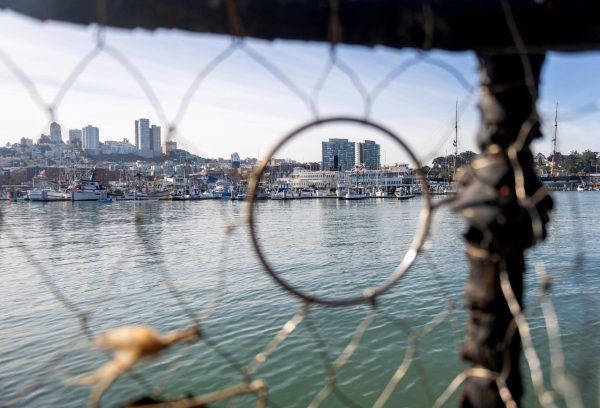
“They [salmon] make up a minimum 50% of my business,” Medinas said. “The public needs to know that it isn’t just salmon being harmed. There are so many other species that are not thriving. They’re just barely existing, and that’s wrong.”
For the fishers, it’s the raw moments experienced alongside the natural world that make it all worth it. According to Franklin, having an experience with nature is far more satisfying than landing the big one.
“One of my all time favorite memories [was] when I [taught] the fishing camp,” Franklin said. “We had an unusual number of whales in the bay and that particular day the fishing was so-so. The whales were literally from the Golden Gate Bridge to Alcatraz.” [FRANKLIN, 19:42]
Pacific humpback whales, who often grow to be 40 ft or more, often enter the San Francisco Bay to follow bait fish or krill.
“I set the boat down and I told the kids, ‘Fishing is over, this you will never see in your lifetime.’ Because I had never seen them in the Bay and this many humpbacks jumping around this boat. It was amazing to see the show that they put off right in the middle of the biggest amphitheater nature did create.”
Gregg Castro, who is the culture director of the Association of the Ramaytush Ohlone and advises environmental organizations, says society needs to recognize the importance of the environment.
“I think people need to understand that the planet is going to be fine without us,” Castro said. “What we view as radical change, it doesn’t view as so radical. So, people need to get off their pedestal that they put themselves on and understand that they are part of the environment. If they don’t, they’re the ones in trouble.”



